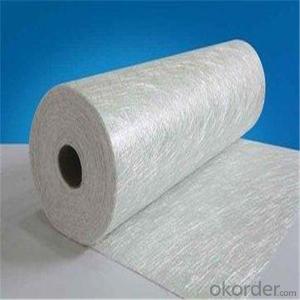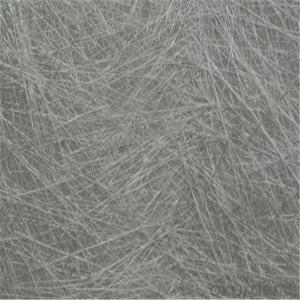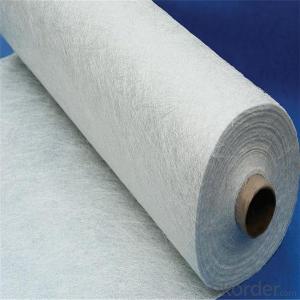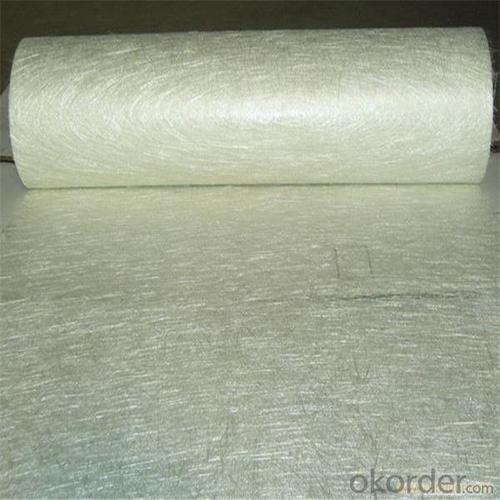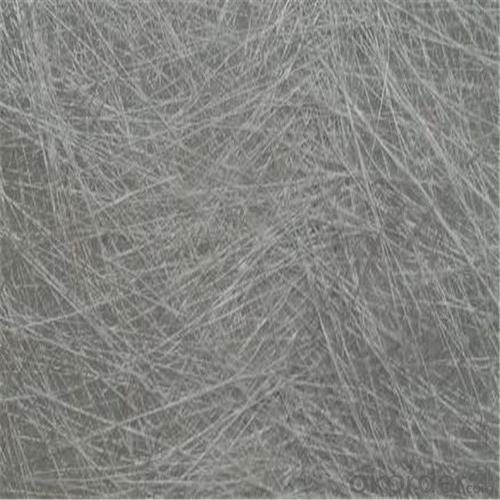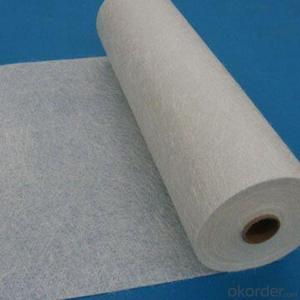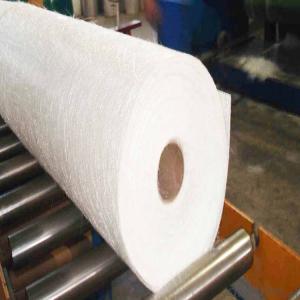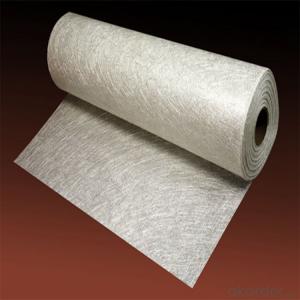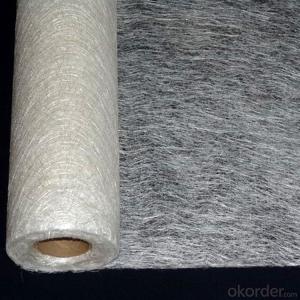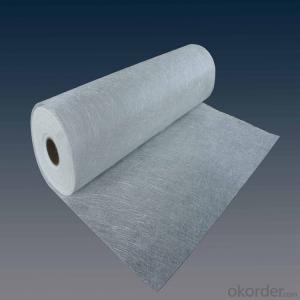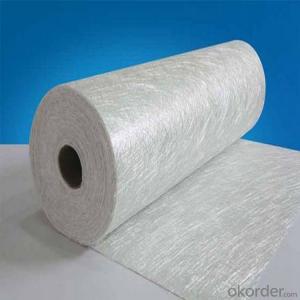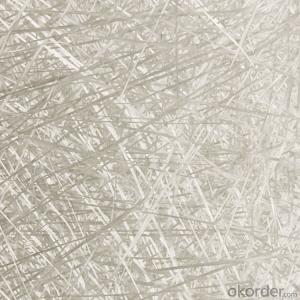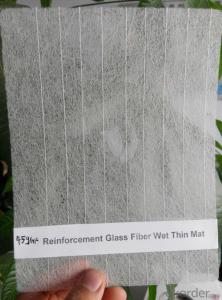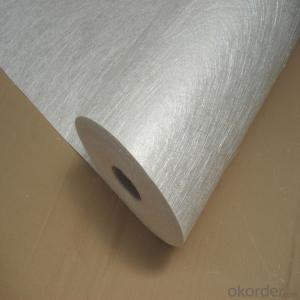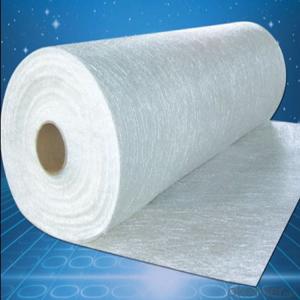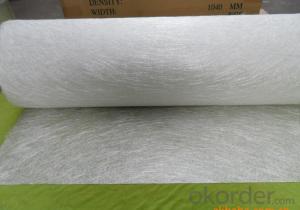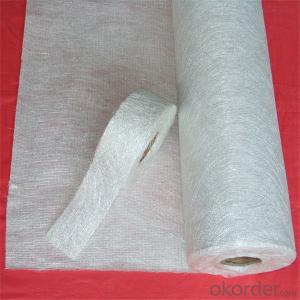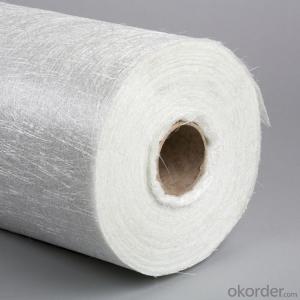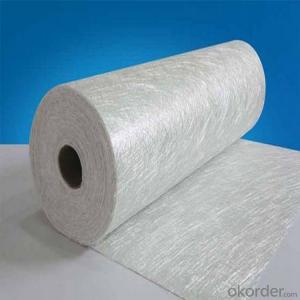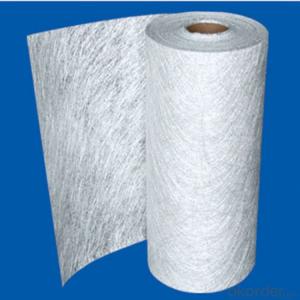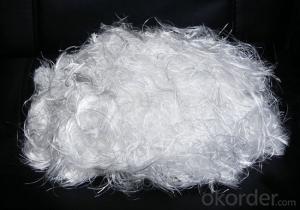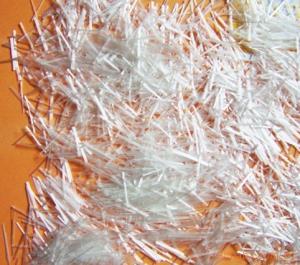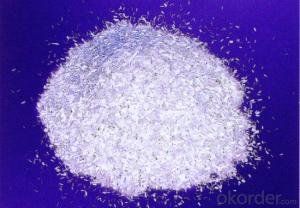Powder or Emulsion Fiberglass Chopped Strand Mat
- Loading Port:
- Tianjin
- Payment Terms:
- TT OR LC
- Min Order Qty:
- 100 m.t.
- Supply Capability:
- 10000 m.t./month
OKorder Service Pledge
OKorder Financial Service
You Might Also Like
Quick Details
| Technique: | Chopped Strand Fiberglass Mat (CSM) | Dimensions: | 80g - 900g | Mat Type: | Continuous Filament Mat |
| Fiberglass Type: | E-Glass | Softness: | soft, very soft | Place of Origin: | Shandong, China (Mainland) |
| Brand Name: | cnbm | Model Number: | CSM | material: | fiberglass |
| Glass type: | E glass / C glass | Bond type: | powder or emulsion | Roll width: | 200 - 2600mm |
| Roll weight: | 28 - 55kgs | Density: | 225g/m2, 300g/m2, 450g/m2 | Certification: | ISO, CE |
Packaging & Delivery
| Packaging Details: | standand export packing . or packed as customer's need |
| Delivery Detail: | 10-20days after the contract is effective |
Specifications
Fiberglass Chopped Strand Mat
1.good combination fo resin
2.easy operation
3.good wet strength retention
Specification:
Fiberglass Chopped Strand Mat is an non-woven E- or C-glass fiberglass fabric manufactured by spreading continuous filament rovings of 50mm in length randomly and uniformly in combination with polyester binder in power form (or other binder in emulsion form). Powder or Emulsion fiberglass fiber chopped glass mat
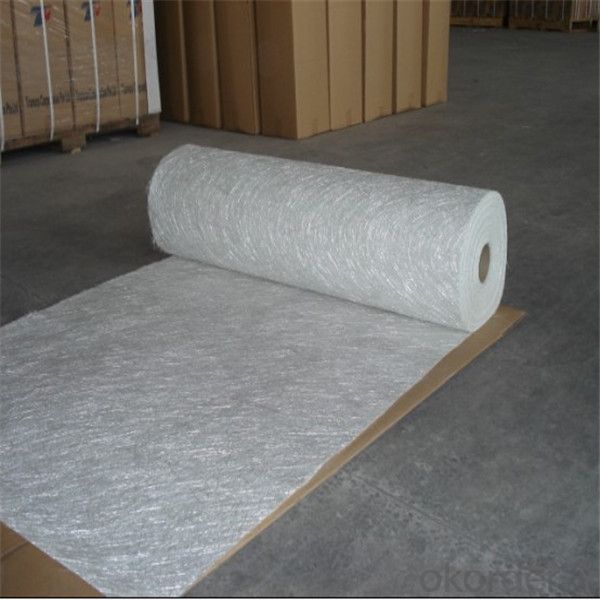
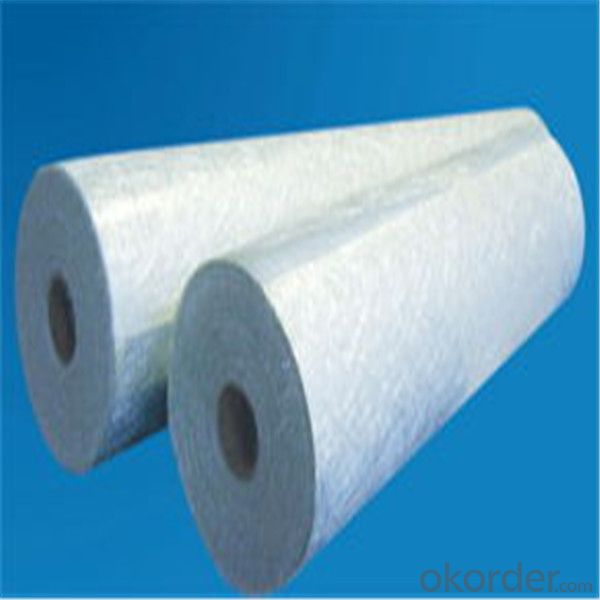
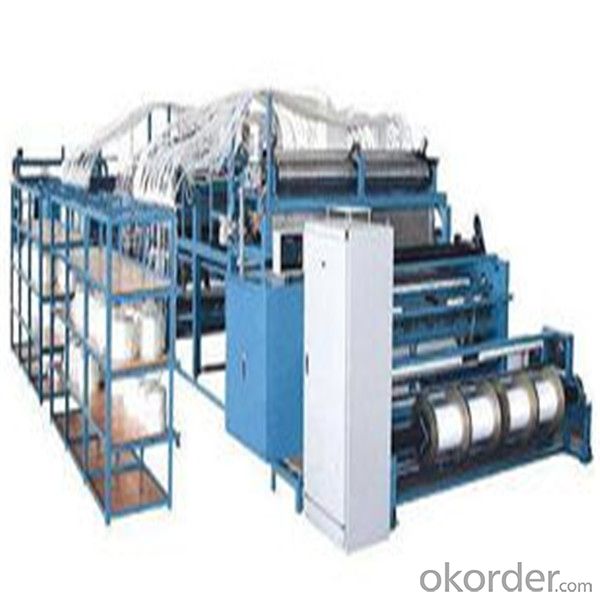
- Q: Can fiberglass chopped strand be used in the manufacturing of sports equipment?
- Yes, fiberglass chopped strand can be used in the manufacturing of sports equipment. It is commonly used as a reinforcement material in composite structures due to its lightweight, high strength, and excellent impact resistance properties. Fiberglass chopped strand can be incorporated into various sports equipment such as tennis rackets, hockey sticks, surfboards, and bicycle frames to enhance their performance and durability.
- Q: What are the mechanical insulation properties of fiberglass chopped strand?
- Fiberglass chopped strand has excellent mechanical insulation properties. It has high tensile strength, meaning it can withstand significant pulling forces without breaking. It is also highly resistant to compression, making it suitable for applications where it needs to support heavy loads. Additionally, fiberglass chopped strand has low thermal conductivity, meaning it is a good insulator of heat and can effectively prevent the transfer of thermal energy. Overall, its mechanical insulation properties make it a popular choice for various industries, including construction, automotive, and aerospace.
- Q: Can fiberglass chopped strand be used in the production of wind turbine hubs?
- Yes, fiberglass chopped strand can be used in the production of wind turbine hubs. It is a commonly used material due to its high strength and lightweight properties, making it suitable for applications requiring structural integrity such as wind turbine hubs.
- Q: Can fiberglass chopped strand be used in aerospace interior components?
- Yes, fiberglass chopped strand can be used in aerospace interior components. It is a lightweight and durable material that meets the stringent safety and performance requirements of the aerospace industry. It can be used for various applications such as insulation, paneling, and structural components.
- Q: How does the fiber length affect the flow behavior of chopped strand composites?
- The flow behavior of chopped strand composites is significantly influenced by the length of the fibers they contain. Chopped strand composites are created by combining short fibers, typically measuring around 1-3 centimeters, with a matrix material like resin. When the fiber length is shorter, it enables better dispersion and distribution within the matrix material. This leads to a more uniform mixture, enhancing the mechanical properties of the composite. Additionally, the shorter fibers have a larger surface area, promoting stronger bonding between the fibers and the matrix material. Conversely, longer fiber lengths can result in inadequate dispersion and clustering within the matrix material. This can create areas of high fiber concentration, known as fiber bundles, which can adversely impact the mechanical properties of the composite. Longer fibers also have a smaller surface area, which can diminish the bonding between the fibers and the matrix material. Regarding flow behavior, shorter fiber lengths generally yield lower viscosity and improved fluidity in the composite mixture. This is because the shorter fibers can more easily slide past each other, allowing the matrix material to flow more freely. Conversely, longer fiber lengths can raise viscosity and reduce the composite mixture's flowability as the fibers impede the movement of the matrix material. In summary, the fiber length is crucial in determining the flow behavior of chopped strand composites. Careful consideration should be given to selecting the appropriate fiber length to achieve the desired mechanical properties and flow characteristics for the composite material.
- Q: Can fiberglass chopped strand be used in the manufacture of pipes and tanks?
- Indeed, pipes and tanks can utilize fiberglass chopped strand for their production. This particular reinforcing material is crafted from delicate glass fibers that have been cut into shorter lengths. By combining these chopped strands with a resin matrix, a composite material is formed that possesses strength, lightness, and resistance to corrosion. Throughout the manufacturing procedure of pipes and tanks, fiberglass chopped strand can be employed as a reinforcement layer to bolster the overall structural integrity of the end product. It enhances tensile and flexural strength while improving dimensional stability, making it the perfect material for applications that require longevity and durability. Moreover, fiberglass chopped strand exhibits remarkable resistance to chemicals, moisture, and environmental elements. This renders it suitable for pipes and tanks that will be exposed to harsh conditions or corrosive substances, particularly in industrial environments or underground installations. Additionally, fiberglass chopped strand can be effortlessly molded into various shapes and sizes, granting flexibility in design and customization options. It can be utilized in both filament winding and hand lay-up processes, allowing compatibility with different manufacturing techniques. All in all, utilizing fiberglass chopped strand in the production of pipes and tanks provides numerous advantages, such as increased strength, corrosion resistance, and design versatility. It is a dependable and cost-effective solution for creating durable and high-performing products across various industries.
- Q: How is the surface roughness of fiberglass chopped strand measured?
- The surface roughness of fiberglass chopped strand is typically measured using a device called a profilometer. This instrument uses a stylus to scan the surface of the fiberglass and measures the height variations to determine the roughness. The results are usually expressed in terms of the Ra value, which represents the average roughness of the surface.
- Q: Can fiberglass chopped strand be used in the production of wind turbine towers?
- Yes, fiberglass chopped strand can be used in the production of wind turbine towers. Fiberglass chopped strand is a type of reinforcement material that consists of short strands of fiberglass. It is commonly used in the manufacturing of composite materials, such as fiberglass-reinforced plastic (FRP) or fiber-reinforced polymer (FRP) composites. Wind turbine towers are often made of composite materials due to their lightweight and high strength-to-weight ratio characteristics. These materials provide the necessary stiffness and durability required to withstand the constant exposure to wind and other environmental conditions. Fiberglass chopped strand is an important component in the production of wind turbine towers as it helps to reinforce the composite material and enhance its overall structural integrity. The chopped strands are typically mixed with a resin matrix, such as epoxy or polyester, to create a strong and durable composite material. The fiberglass chopped strand provides additional strength and stiffness to the composite, allowing the wind turbine tower to withstand the forces exerted by strong winds and support the weight of the turbine blades. It also helps to prevent cracking or delamination of the composite material, ensuring the longevity and reliability of the wind turbine tower. In conclusion, fiberglass chopped strand is a suitable material for use in the production of wind turbine towers. Its reinforcing properties and compatibility with composite materials make it an ideal choice for creating strong and durable structures capable of withstanding the harsh conditions of wind turbine environments.
- Q: Can fiberglass chopped strand be used in electrical applications?
- Indeed, it is possible to utilize fiberglass chopped strand in electrical applications. This material is generated by cutting continuous fiberglass strands into shorter lengths, and it serves as a reinforcing substance in diverse applications, such as electrical components. Fiberglass chopped strand boasts remarkable mechanical strength and electrical insulation properties, rendering it suitable for deployment in electrical insulation materials, circuit boards, electrical enclosures, and other electrical components. By enhancing the strength, durability, and electrical performance of these applications, it contributes to their increased reliability and efficiency. Furthermore, when combined with resins, fiberglass chopped strand can yield composite materials with improved electrical properties tailored for specific electrical applications.
- Q: How does the adhesion of the chopped strand affect its performance?
- The performance of the chopped strand is heavily influenced by its adhesion. Adhesion refers to the strength of the bond between the individual glass fibers and the matrix material in a composite. A robust adhesion between the chopped strand and the matrix material offers numerous benefits. Firstly, it facilitates effective load transfer between the fibers and the matrix, resulting in enhanced mechanical properties like tensile strength, flexural strength, and impact resistance. Load transfer is crucial because the fibers bear the majority of the load in a composite. A weak adhesion could hinder load transfer, leading to subpar overall performance. Secondly, a strong adhesion helps prevent fiber pull-out. Fiber pull-out occurs when the fibers are not firmly bonded to the matrix and are pulled out during loading, reducing the efficiency of the composite. With a solid adhesion, the fibers remain embedded in the matrix, providing continuous reinforcement and bolstering the material's overall strength. Moreover, a strong adhesion also improves the composite's resistance to environmental factors like moisture and temperature. A weak adhesion can compromise the material's resistance to these factors, leading to degradation and diminished performance over time. In conclusion, the adhesion of the chopped strand significantly impacts its performance. A strong adhesion ensures effective load transfer, prevents fiber pull-out, and enhances resistance to environmental factors, ultimately resulting in improved mechanical properties and durability of the composite material.
Send your message to us
Powder or Emulsion Fiberglass Chopped Strand Mat
- Loading Port:
- Tianjin
- Payment Terms:
- TT OR LC
- Min Order Qty:
- 100 m.t.
- Supply Capability:
- 10000 m.t./month
OKorder Service Pledge
OKorder Financial Service
Similar products
Hot products
Hot Searches
Related keywords



